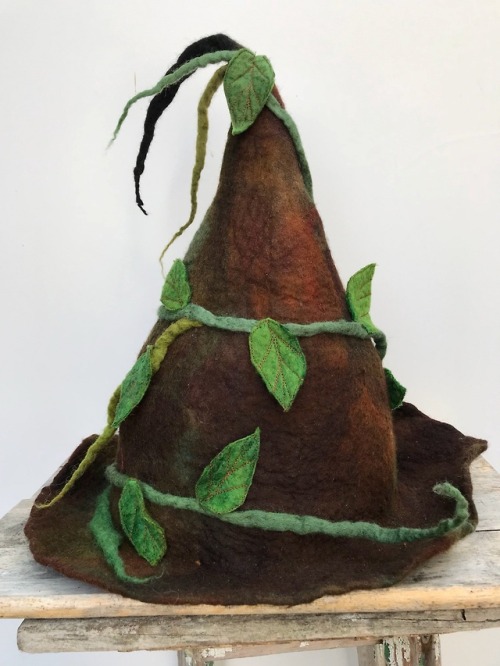Why Did We As A Society Ever Stop Making Jugend Style Architecture?
Why did we as a society ever stop making Jugend style architecture?
That should honestly be something we bring back for Solarpunk. The nature inspired and geometric designs feel like they should be right up that particular alley.
More Posts from Copperfingertips and Others


Meet the Women Behind California’s First Open-Water Seaweed Farm
They’re on a quest for a delicious solution to global food insecurity
Tessa Emmer, Catherine O’Hare, and Avery Resor constitute the all-female braintrust behind Salt Point Seaweed, a fledgling Bay Area company that launched last June. They’ve been harvesting wild seaweed off the coast of Mendocino County, located a few hours north of San Francisco, for two years and selling it to chefs at local restaurants, seafood CSAs, and at retail. Now, they’re striving to become the first West Coast seaweed farming operation to establish an active, open-water farm.
The idea to launch a sustainable seaweed syndicate came to Emmer, O’Hare, and Resor after living in East Africa and witnessing the burgeoning role of seaweed in those communities—as local fishing stock dwindled, resourceful women had found a reliable replacement in seaweed. Seaweed grows rapidly and easily without help from external inputs. Emmer and Resor, who share a background in natural resource management, drew inspiration from a hardscrabble female aquafarming operation in Zanzibar. “There were so many women farmers using it as an alternative revenue model in declining fisheries environments,” says Emmer. “We started wondering why it wasn’t happening in California.”
(via Meet the Women Behind California’s First Open-Water Seaweed Farm | Sierra Club)

Salt Point Seaweed is a three-woman team - Tessa Emmer, Catherine O'Hare, and Avery Resor - living in the Bay Area and working throughout California.
Tessa and Catherine met as undergraduates at Oberlin College and have spent many days exploring the Pacific Ocean from Oahu, Hawaii, to Mendocino, California. Tessa fell in love with the coastal and riparian ecosystems of the Pacific coast when she came out to California for a restoration internship with the Presidio of San Francisco. Her drive to work at the intersection of ecological conservation, economic development, and climate adaptation led her to pursue a master in sustainable development at UC Berkeley, where she met Avery.
Catherine has a background in coastal ecology and sustainable agriculture. She grew up next to the ocean, splashing around the sunny tide pools of southern California. After graduating with a Biology degree from Oberlin College, she worked for small scale organic farms and a small food business, solidifying her passion for local food, regenerative food systems, and health.
Avery grew up living and working on a cattle ranch and has been working in sustainable agriculture ever since. At Duke University Marine Lab, she studied marine biology and environmental science and was captivated by the parallels between aquaculture and land-based agriculture. She is integrating her agriculture experience with 10 years of professional cooking experience to bring farm-to-table culinary expertise to our team.
Avery, Catherine, and Tessa are all committed to using business as a force for environmental protection, community development, and food system transformation.
https://www.saltpointseaweed.com/about
You can find out more / follow them on instagram here: https://www.instagram.com/saltpointseaweed/
capitalism is fucking scary because it will commodify literally anything. it commodifies the rebellion culture that is supposed to strike against the system but capitalism turns it into “punk rock”. it commodifies spirituality to make you buy self help books that teaches you to stay away from capitalism. it commodifies minimalism and makes you buy things to maintain your minimalist aesthetic. it commodifies global warming, one of the deadliest consequences of capitalism itself and guilt trips you into buying “green products”. it commodifies itself and creates the idea that vanity is fashionable. it will eat everything up.

i think one of the things i want to start learning in 2018 is how to make clothes. how do you start doing that?

Six talking points to use when debunking the myth that overpopulation is the root of the environmental crisis:
1. Rates of population growth are declining: Between 1950 and 2000, the world population grew at a rate of 1.76%. However, between 2000 and 2050, the rate of growth is expected to decline to 0.77%.
2. Overpopulation is defined by numbers of people, not their behaviors: Industrialized countries, who make up only 20% of the world’s population, are responsible for 80% of the carbon dioxide build-up in the atmosphere. The United States is the worst offender, with 20 tons of carbon emission per person. Therefore, it is not the amount of people that leads to degradation, but what they are doing. Permaculture design illustrates how humans can have a positive impact on the health of our ecosystems, bringing greater health and equity.
3. Overpopulation justifies the scapegoating and human rights violations of poor people, women, people of color, and immigrant communities: Often times the subtext of “too many people” translates to too many poor people, people of color, and immigrants. This idea has been used to justify such practices as the forced sterilization of 35% of women of childbearing age in 1970′s Puerto Rico, under the control of and with funding from the US government. This is a human and reproductive rights violation.
4. Overpopulation points the finger at individuals, not systems: This lets the real culprits off the hook. When we look at the true causes of environmental destruction and poverty, it is often social, political and economic systems, not individuals. We see militaries and the toxic legacy of war, corrupt governments, and a capitalist economic system that puts profit over people and the environment.
5. Supports a degenerative mental model of scarcity: Much of this ideology was created by Thomas Robert Malthus, an 19th century English scholar. Malthus gave us the erroneous idea that the reason there is famine is because there are too many mouths to feed. This hides the reality that we have a distribution problem, not a scarcity problem. Malthus’s work has been used as the philosophical bedrock to justify many human rights violations throughout history.
6. Focusing on overpopulation prevents us from creating effective solutions and building movements for collective self determination: Permaculture teaches us that how we define a problem determines how we design solutions. How does viewing overpopulation as a root problem impact the way we think of and design solutions? What would solutions look like if we viewed people, all people, as an asset? The myth of overpopulation has lead to solutions of population control and fertility treatments, rather than overall health care and women’s rights. The more we blame humans and think we are bad and evil, the harder it is to believe in ourselves, count on each other, and build a collective movement for justice and self determination.

Tis the season of mass consumption. One of my friends was telling me about how her grandmother used to save old holiday cards to make name tags for presents. Seemed pretty solarpunk to me. Thought I’d share.

Purple Dragon aesthetic
I have started playing Stardew valley again, this time together with my boyfriend and honestly it’s wholesome… like, not only Stardew Valley per se has a great calming and fulfilling atmosphere, but being there with my boyfriend, waking up with him at 6 am just like irl but here it’s to water crops, cut a few trees, perhaps fish and chat with the community? I love it.
-
 ghostofhalloweenspast reblogged this · 6 years ago
ghostofhalloweenspast reblogged this · 6 years ago -
 ghostofhalloweenspast liked this · 6 years ago
ghostofhalloweenspast liked this · 6 years ago -
 neeeeerrrrrd liked this · 6 years ago
neeeeerrrrrd liked this · 6 years ago -
 radglittercollection reblogged this · 6 years ago
radglittercollection reblogged this · 6 years ago -
 copperfingertips reblogged this · 6 years ago
copperfingertips reblogged this · 6 years ago -
 solarpunkbaby liked this · 6 years ago
solarpunkbaby liked this · 6 years ago -
 silens-sirenis liked this · 6 years ago
silens-sirenis liked this · 6 years ago -
 skyofred liked this · 6 years ago
skyofred liked this · 6 years ago -
 audaciouscat-blog liked this · 6 years ago
audaciouscat-blog liked this · 6 years ago -
 mybookswerealltome liked this · 6 years ago
mybookswerealltome liked this · 6 years ago -
 surumarssi reblogged this · 6 years ago
surumarssi reblogged this · 6 years ago -
 bonjour-llama reblogged this · 6 years ago
bonjour-llama reblogged this · 6 years ago -
 bonjour-llama liked this · 6 years ago
bonjour-llama liked this · 6 years ago -
 kinkforest-psytrixie reblogged this · 6 years ago
kinkforest-psytrixie reblogged this · 6 years ago -
 kinkforest-psytrixie liked this · 6 years ago
kinkforest-psytrixie liked this · 6 years ago -
 timeslive-inhouse reblogged this · 6 years ago
timeslive-inhouse reblogged this · 6 years ago -
 timeslive-inhouse liked this · 6 years ago
timeslive-inhouse liked this · 6 years ago -
 surumarssi reblogged this · 6 years ago
surumarssi reblogged this · 6 years ago










